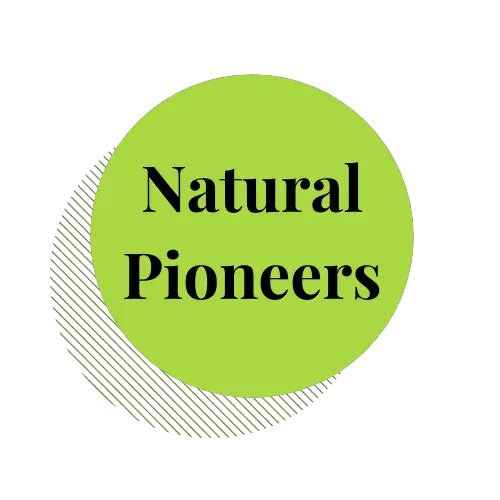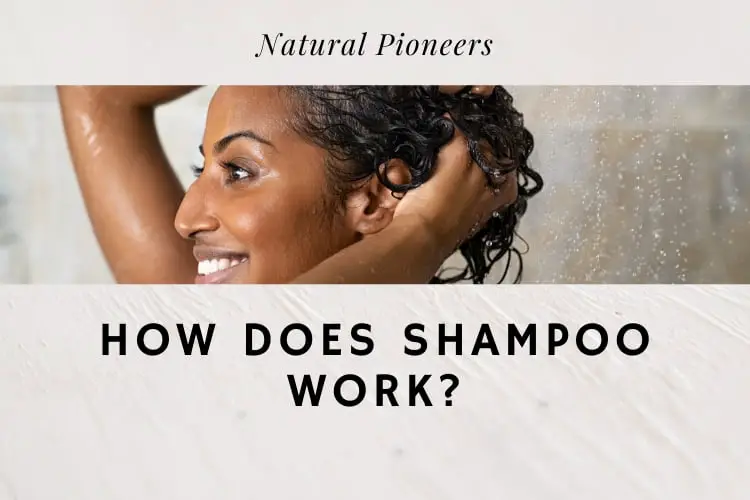
Oftentimes, we use products on a daily basis without understanding how they work. Let’s learn about shampoo’s ingredients, how it cleans hair and scalp, what conditioners are for, and what toxins to avoid.
Surfactants are the cleaning agents in shampoo. One side of this molecule sticks to dirt while the other side is attracted to water. Therefore, surfactants surround the dirt particles and will stick to water when rinsing your hair, taking all dirt particles with them.
Let’s explore the ingredients of shampoo & see if there really is a difference between brands.
1. Shampoo’s Cleaning Formulation
All shampoo formulations contain the same basic ingredients. While the variety of shampoos in the marketplace seems confusing, the ingredient categories are to a large extent standard.
Let’s take a look at the list and find out what a shampoo’s cleaning agents are.
Shampoo Formulation
- Synthetic Detergents: Remove dirt, styling products, sebum, and skin scales from hair and scalp
- Conditioners: Leave the hair soft and smooth
- Sequestering Agents: Prevent soap scum from forming on the hair
- Preservatives: Prevent microbial and fungal contamination of shampoo
- Specialty Additives: Provide ingredients for special treatment (for example dandruff)
- Foaming Agents: Suds have only one function, to satisfy people’s need for foamy products and have no cleaning power in themselves
- Thickeners: Thicken the shampoo, as people feel that a thick shampoo works better
- Opacifiers: Added to make a shampoo opaque for aesthetic purposes
- Fragrances: Added to give the shampoo a desired smell [1]
When we take a close look at the formulation list, it’s clear that synthetic detergents are what we’re looking for. Interestingly, almost half of the ingredients in shampoos are not required. Hence, foaming agents, thickeners, opacifiers, and fragrances are nice to have, but have no impact on a shampoo’s cleaning effectiveness.
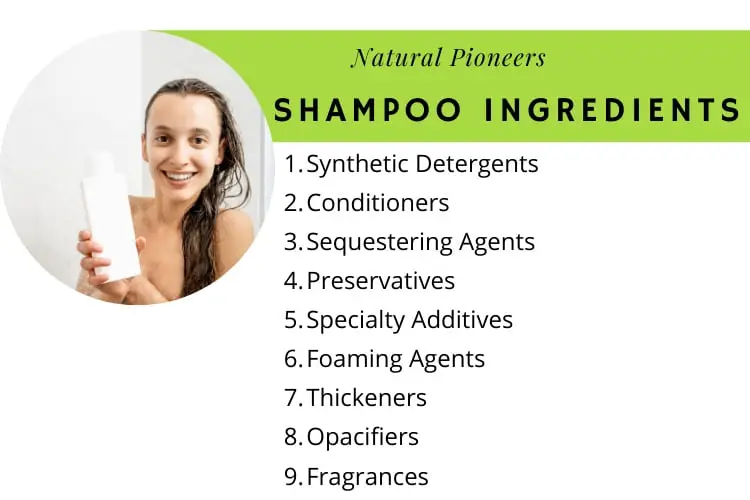
Let’s see how synthetic detergents get our hair clean.
2. Synthetic Detergents In Action
Synthetic detergents are also called surfactants, which is short for “SURFace ACTive AgeNt”. [2] Think of surfactants as a lollipop. The stick is strongly attracted to dirt or grease and the pop really likes water. That means surfactants have to sides: the pop side is attracted by water, and the stick side repels it.
Here’s what happens when you use shampoo:
- Surfactants are mixed with water when you apply shampoo to your wet hair.
- The stick side which loves grease will stick to all dirt it can find. To the point that it covers the entire dirt particle and lifts it off of your hair.
- Massaging shampoo into your scalp helps break down dirt & grease into even smaller pieces.
- As soon as you rinse shampoo, the water loving side (the pop side) will connect with the water and the entire dirt and grease particles are rinsed out of your hair.
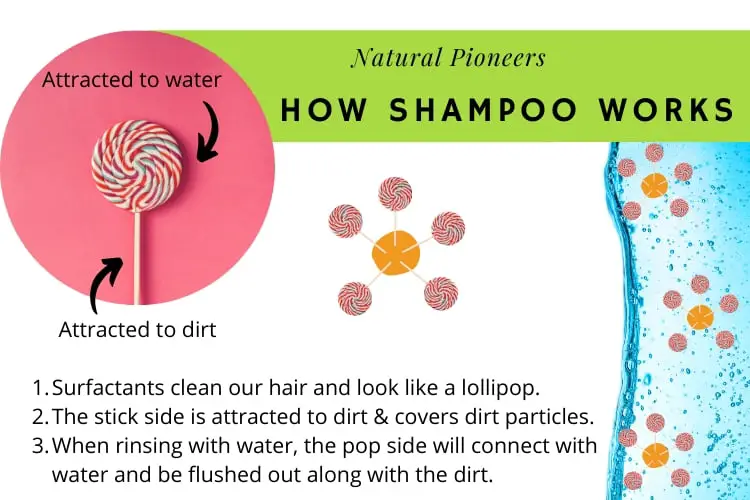
Most of our everyday cleaning products are made with synthetic detergents. Soap is most commonly found in bar soap and a more natural product. You can make soap at home by mixing fatty acids and sodium hydroxide (lye).
3. Conditioning Agents & How They Work
Most shampoos contain small amounts of conditioners. Shampoo for dry and damaged hair contains the most conditioner followed by shampoo for normal hair, oily hair, and baby shampoo. Some shampoos like everyday shampoos & deep cleansing shampoos usually don’t contain conditioner. [3]
Let’s dive into (easy to understand) physics to see how conditioner works.
When we wash our hair, our hair has a negative charge. Think of the negative pole of a magnet. Shampoos contain a small amount of conditioners which are positively charged. That means they are strongly attracted to your hair and evenly stick to it.
This electrostatic interaction lubricates the surface of each hair follicle and makes combing a lot easier. Since the negative charge (-) after shampooing and the positive conditioning charge (+) balance each other out, this also helps reduce frizz. [4]
If you choose shampoos that contain small amounts of conditioner (for example shampoo for dry or damaged hair) they will do a better job at nourishing your hair. They provide mild cleansing and good conditioning to protect hair, minimize frizz and add shine.
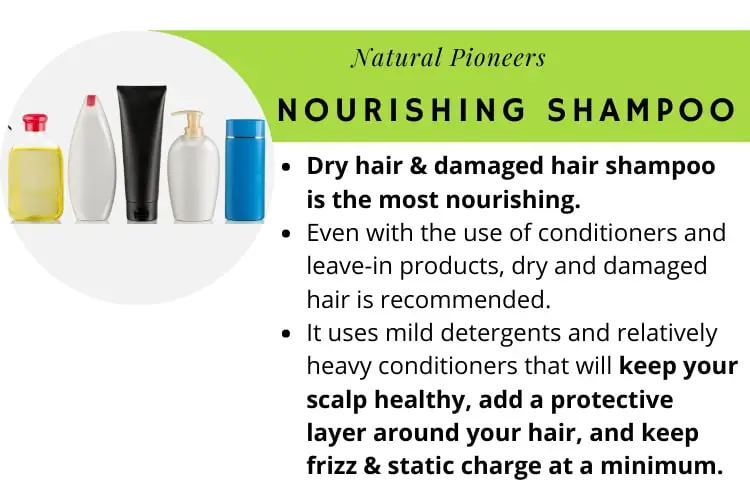
But are all these ingredients in our shampoos safe?
3. Toxins In Regular Shampoos
Let’s see what toxins are found in most shampoos in the US and how they affect our health based on studies.
1. Surfactants
We just went over how surfactants work. Some produce bubbles, that we all enjoy while shampooing our hair. Unfortunately, during production 1,4-dioxane is formed which is known to cause cancer. It is banned from use in the European Union. Short-term exposure may cause eye, nose, and throat irritation, long-term exposure may cause kidney and liver damage. [5], [6] Sulfate-free shampoos use safe surfactants like decyl glucoside and laurel glucoside. [7], [8]
The Bad Boys: sodium lauryl sulfate (SLS), sodium laureth sulfate (SLES), cocamidopropyl betaine, and cocamide DEA. Non-toxic, safe surfactants include decyl glucoside and laurel glucoside.
The Take-Away: Use sulfate-free shampoo.
2. Preservatives
To extend shelf life, many shampoos contain preservatives. Some may cause breast cancer, are associated with immunotoxicity and allergies, or are neurotoxins. [9], [10], [11]
The Bad Boys: Parabens, benzyl alcohol, methylisothiazolinone, and methylchloroisothiazonlinone.
The Take-Away: Avoid products with these preservaties. You can find a list of safe, non-toxic shampoos in our article Can Shampoo Really Nourish Hair?
3. Smells
When you see “fragrance” or “parfum” on the ingredients list, they really mean phthaltes. Phthaltes disrupt our hormones and can harm our reproductive system. In children, they can disturb normal development. [12], [13], [14]
The Bad Boys: Phthaltes (labeled as parfum or fragrance).
The Take-Away: Go fragrance free or choose essential oils.
4. Retinyl Palmitate:
Retinyl palmitate is a form of Vitamin A. It is associated with birth defects and a known carcinogen, causing an increase in skin tumors. [15], [16]
The Bad Boys: Retinyl palmitate
The Take-Away: Avoid retinyl palmitate at all cost and check out our list of safe, non-toxic shampoos in our article Is Natural Shampoo Really Better?
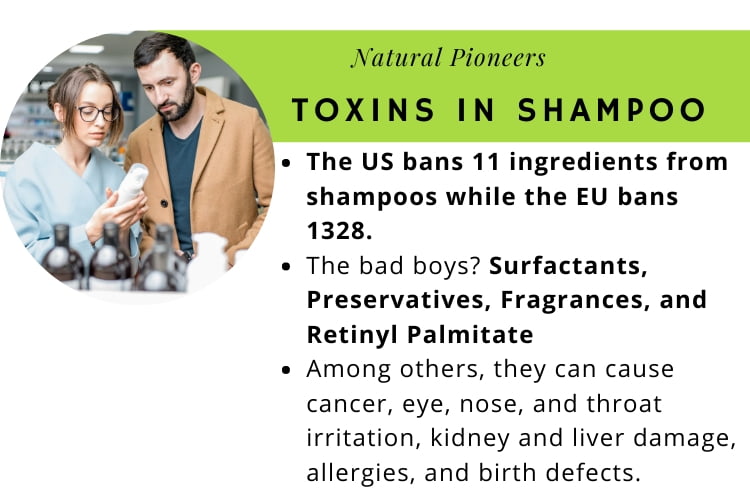
5. Conclusion
Surfactants are the cleaning agents in shampoo. These molecules basically look like a lollipop. The stick is strongly attracted to dirt or grease and the pop really likes water.
When using shampoo on wet hair, the surfactants are mixed with water. The molecule side attracted to dirt will cover the entire dirt particle and lift it off of your hair.
Massaging shampoo into your scalp will help break down dirt particles and make sure they are all thoroughly covered with the surfactants.
As soon as you rinse shampoo with water, the water loving side (the pop side) will connect with the water and the entire dirt and grease particles are rinsed out of your hair.
Most shampoos contain small amounts of conditioners. Shampoo for dry and damaged hair contains the most conditioner. When we wash our hair, our hair has a negative charge. Conditioning agents are positively charged and strongly attracted to our hair. The conditioner will therefore evenly stick to it. This protects hair and adds shine.
This electrostatic interaction lubricates the surface of each hair follicle and makes combing a lot easier. Since the negative charge (-) after shampooing and the positive conditioning charge (+) balance each other out, this also helps reduce frizz.
Unfortunately, many chemicals in shampoo have an adverse effect on our health. Surfactants are among those. A crucial step toward healthy hair is to minimize toxic exposure. As a comparison, the US bans 11 ingredients from shampoos, Canada bans 587, and the EU bans 1328.
Choosing products without surfactants, preservatives, fragrances, and retinyl palmitate is key for healthy hair and a healthy body. For more information on safe shampoo products, check our article Can Shampoo Really Nourish Hair?
